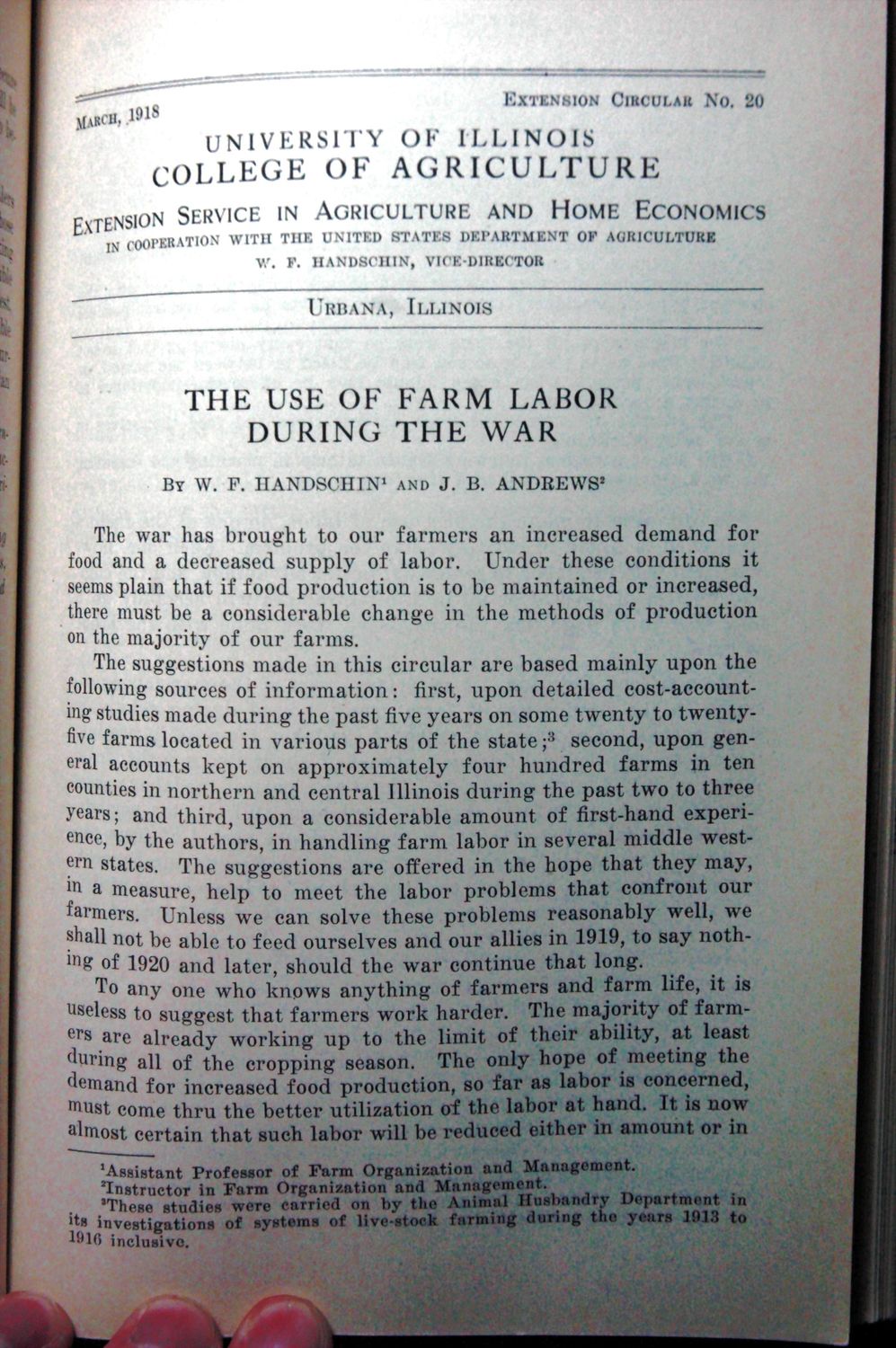Caption: War Publications - WWI Compilation 1923 - Article 28
This is a reduced-resolution page image for fast online browsing.

EXTRACTED TEXT FROM PAGE:
I1XTBN8I0N ClK( UI.Ail No. 'JO MARCH1918 UNIVERSITY OF ILLINOIS COLLEGE OF A G R I C U L T U R E P TENSION SERVICE IN AGRICULTURE AND H O M E ECONOMICS roorK < TOIC URIIANA, ILLINOIS THE USE OF FARM LABOR DURING THE WAR BY W. P . I I A N D S C H I N 1 AND J . B. A N D R E W S 2 The war has brought to our farmers an increased demand for food and a decreased supply of labor. Under these conditions it seems plain that if food production is to be maintained or increased, there must be a considerable change in the methods of production on the majority of our farms. The suggestions made in this circular are based mainly upon the following sources of information: first, upon detailed cost-accounting studies made during the past five years on some twenty to twenty3 five farms located in various parts of the state ; second, upon general accounts kept on approximately four hundred farms in ten counties in northern and central Illinois during the past two to three years; and third, upon a considerable amount of first-hand experience, by the authors, in handling farm labor in several middle western states. The suggestions are offered in the hope that they may, M a measure, help to meet the labor problems that confront our farmers. Unless we can solve these problems reasonably well, we shall not be able to feed ourselves and our allies in 1919, to say noth*ag of 1920 and later, should the war continue that long. To any one who knows anything of farmers and farm life, it is useless to suggest that farmers work harder. The majority of farmers are already working up to the limit of their ability, at least hope ' during all of the cropping season. The only * ~^^ of meeting the demand for increased food production, so far as labor is concerned, must come thru the better utilization of the labor at hand 1 is now 1 almost certain that such labor will be reduced either in amount or in 'Assistant Professor of Farm Organization awl Management I n s t r u c t o r in Farm Organization and Man:. *nent. 'These studies w n - carried on by the Animal Elusbandn Department in its investigations of systems of live-stork farming during the years 1918 to 11'10 inclusive. 4 k r
|